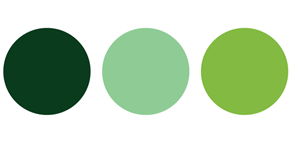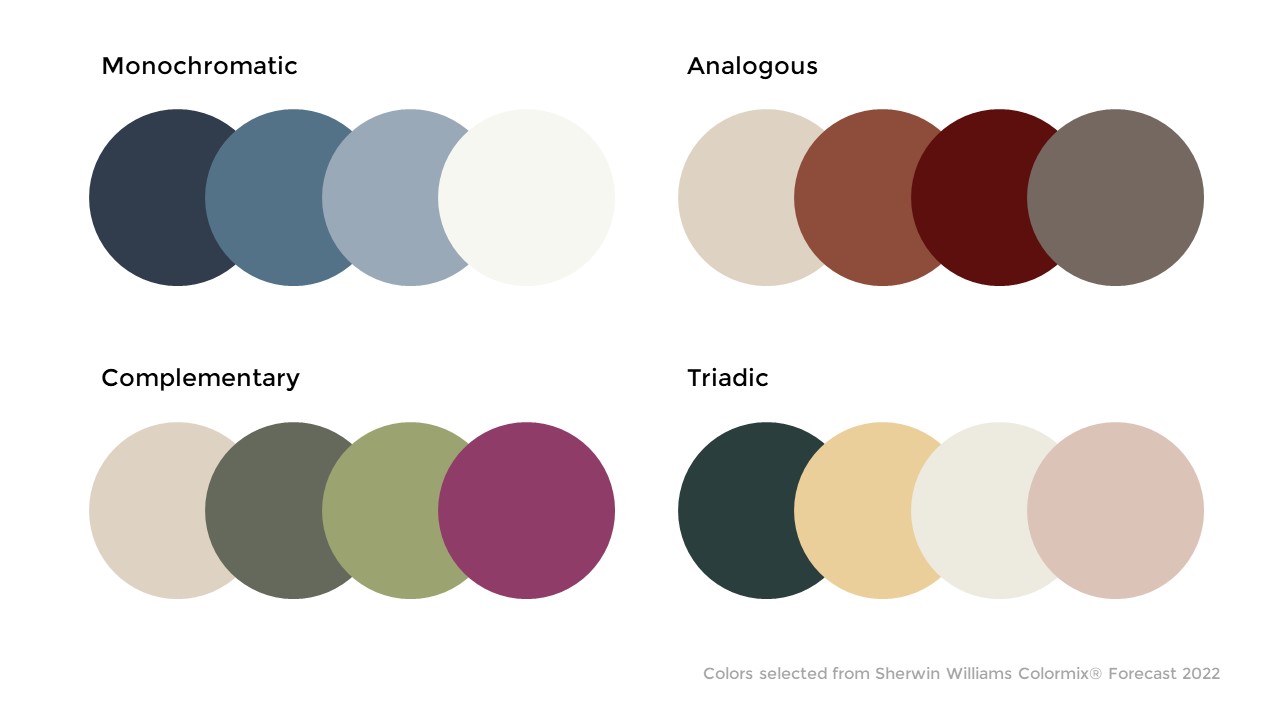
12 Apr Color Associations: What Your Interior Design Says About You
What’s your favorite color? It feels like somewhat of a juvenile question, but why do so many ask this when getting to know someone? We use color to make sense of the world, enhance meaning, convey order, and communicate mood among many other uses. Color is one of the most dominant perceptions of the physical world and therefore is one of the most powerful tools for interior design.
Although each person’s perception of a color is subjective with influencing factors including personal experiences, culture, religion, gender, and race, there are certain colors that have universal significance. Generally, color can be split into two main categories: cool and warm. Cool colors include blue, green, and violet. They are considered restful and quiet. Warm colors such as red, yellow, and orange are seen as active and stimulating. These color associations can directly affect a variety of things like how someone sees you, a product, or a brand. Research suggests that people decide whether or not they like a product within 90 seconds or less. 90% of that decision is based on color. As a result, it is important to consider how you can use color to communicate your brand or company. Every person typically associates color with meaning, whether they realize it or not. Below we will provide some general associations people have with color.
Color Associations
- Red: danger, warning, passion, love
- Orange: creativity, courage, warmth
- Yellow: cheer, caution, hospitality
- Green: nature, luck, progress, envy
- Blue: trust, authority, calming, peaceful, sadness
- Purple: modernism, progression, royalty, honor
- White: pure, fresh, clean
- Gray: serious, professional, responsible
- Black: sophisticated, serious, luxury, elegance
Dental practices often stick within the cool side of the color spectrum due to the calming, trusting associations of the colors. However, when every dental practice is predominately blue, how do you stand out from the crowd?
All of these perceptions can change due to the brightness, shade, tint, or tone of each hue. Let’s break down color a bit further. Color is comprised of three basic qualities: hue, value, and intensity. Hue is the color as we know it: red, blue, green. It acts as the category. Value is the degree of lightness or darkness of the color in relation to adding white or black. When white is added to a hue, its value is raised and a tint is created. When black is added, its value is lowered and a shade is created. Adding gray of the same value to a hue creates a tone. The intensity of a color is defined by the degree of purity of the hue.
Playing with color can really be a tricky game if not properly thought through. Here are three greens of varying brightness, shade, tint, and tone. On the far left, the dark green conveys more of a deep, tranquil mood. In the middle, the light tint of green is delicate and airy. And lastly, the high-intensity hue conveys vibrancy and energy.
Four Most Common Themes
Research suggests that color schemes alone can have a tremendous influence on mood, productivity, and well-being. The four most common themes include the following:
- Monochromatic: a single color of varying brightness. This scheme is very versatile due to the amount of variance you can achieve.
- Complementary: opposite colors on the wheel. When two complementary colors are next to one another, each appears to heighten the other’s saturation, creating high intensity and vibrancy.
- Analogous: colors next to each other on the wheel. These schemes are often found in nature, creating a serene and comfortable harmony.
- Triadic: three colors evenly spaced from one another on the color wheel. It is important to create a balance between the three as the combination can compete even in unsaturated hues.
When it comes to interior design, understanding the impact that color has can significantly help you recognize what mood or ambiance you may be illustrating. Color can be a powerful tool as well as a great way to express yourself when properly utilized. With countless colors each with varying hues, values, and intensities, it can be challenging to know which shade or tone to pick. Collaborating with a team of professional interior designers such as Henry Schein Integrated Design Studio is beneficial to make sure you are making the statement and message you wish to portray in your space.


